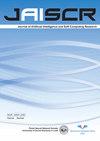LabVIEW-based fire extinguisher model based on acoustic airflow vibrations
IF 2.4
3区 计算机科学
Q2 COMPUTER SCIENCE, ARTIFICIAL INTELLIGENCE
Journal of Artificial Intelligence and Soft Computing Research
Pub Date : 2023-06-24
DOI:10.55195/jscai.1310837
引用次数: 0
Abstract
In recent years, soundwave-based fire extinguishing systems have emerged as a promising avenue for fire safety measures. Despite this potential, the challenge is to determine the exact operating parameters for efficient performance. To address this gap, we present an artificial intelligence (AI)-enhanced decision support model that aims to improve the effectiveness of soundwave-based fire suppression systems. Our model uses advanced machine learning methods, including artificial neural networks, support vector machines (SVM) and logistic regression, to classify the extinguishing and non-extinguishing states of a flame. The classification is influenced by several input parameters, including the type of fuel, the size of the flame, the decibel level, the frequency, the airflow, and the distance to the flame. Our AI model was developed and implemented in LabVIEW for practical use. The performance of these machine learning models was thoroughly evaluated using key performance metrics: Accuracy, Precision, Recognition and F1 Score. The results show a superior classification accuracy of 90.893% for the artificial neural network model, closely followed by the logistic regression and SVM models with 86.836% and 86.728% accuracy, respectively. With this study, we highlight the potential of AI in optimizing acoustic fire suppression systems and offer valuable insights for future development and implementation. These insights could lead to a more efficient and effective use of acoustic fire extinguishing systems, potentially revolutionizing the practice of fire safety management基于labview的基于声气流振动的灭火器模型
近年来,基于声波的灭火系统已成为一种有前途的消防安全措施。尽管有这种潜力,但挑战在于确定准确的操作参数以实现有效的性能。为了解决这一差距,我们提出了一种人工智能(AI)增强的决策支持模型,旨在提高基于声波的灭火系统的有效性。我们的模型使用先进的机器学习方法,包括人工神经网络、支持向量机(SVM)和逻辑回归,来对火焰的灭火和非灭火状态进行分类。分类受几个输入参数的影响,包括燃料的类型、火焰的大小、分贝水平、频率、气流和与火焰的距离。我们的人工智能模型在LabVIEW中开发和实现,以供实际使用。这些机器学习模型的性能使用关键性能指标进行了全面评估:准确性、精度、识别和F1分数。结果表明,人工神经网络模型的分类准确率为90.83%,其次是逻辑回归模型和支持向量机模型,分别为86.836%和86.728%。通过这项研究,我们强调了人工智能在优化声学灭火系统方面的潜力,并为未来的开发和实施提供了有价值的见解。这些见解可能会导致更高效和有效地使用声学灭火系统,可能会彻底改变消防安全管理的实践
本文章由计算机程序翻译,如有差异,请以英文原文为准。
求助全文
约1分钟内获得全文
求助全文
来源期刊

Journal of Artificial Intelligence and Soft Computing Research
COMPUTER SCIENCE, ARTIFICIAL INTELLIGENCE-
CiteScore
7.00
自引率
25.00%
发文量
10
审稿时长
24 weeks
期刊介绍:
Journal of Artificial Intelligence and Soft Computing Research (available also at Sciendo (De Gruyter)) is a dynamically developing international journal focused on the latest scientific results and methods constituting traditional artificial intelligence methods and soft computing techniques. Our goal is to bring together scientists representing both approaches and various research communities.
 求助内容:
求助内容: 应助结果提醒方式:
应助结果提醒方式:


